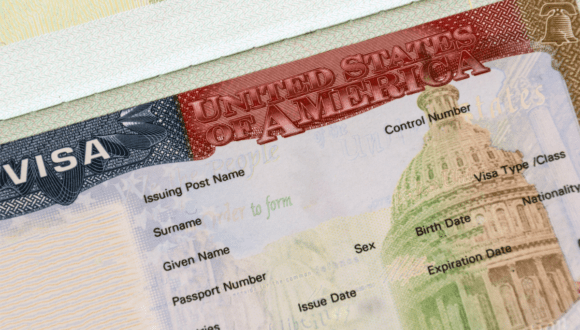Introduction: The Importance of Immigrant Visas in the U.S.
Immigrant visas are a key component of the U.S. immigration system, allowing individuals from around the world to join their families, pursue work opportunities, and contribute to the country’s growth. Whether through family reunification or employment, these visas provide the legal pathway for individuals to enter and stay in the U.S. However, the visa process is not without its challenges. As of 2024, new developments and changes in U.S. immigration policy continue to shape the experience of those seeking to come to America.
Recent Developments in Immigrant Visa Processing
Backlog and Delays in Visa Processing
One of the biggest stories in nejournal.us news in 2024 is the ongoing backlog of visa applications. During the pandemic, the U.S. experienced significant delays and processing backlogs as many government offices were temporarily closed or operating with reduced capacity. While some of these delays were addressed, many applicants still face waiting times of several months or even years for approval.
Family-based immigrant visas, in particular, have been affected by long waiting lists. For example, visas for spouses and children of U.S. citizens have been subject to extended delays, while applicants from countries with high numbers of visa seekers, like India, Mexico, and Philippines, face even longer waits due to caps on visa numbers.
Impact of COVID-19 and the Biden Administration’s Response
The Biden administration has worked to address many of the pandemic-related delays, with efforts to increase staffing, streamline application procedures, and provide updates on processing times. However, the pandemic’s effects are still being felt in 2024, especially for applicants in categories with limited annual quotas, such as employment-based and family-sponsored visas.
Moreover, the administration has emphasized the need for reform in the immigration system to prevent further backlogs and improve the process for both immigrants and U.S. employers seeking foreign workers.
Types of Immigrant Visas and Their Significance
Family-Based Immigration Visas
Family-based immigrant visas remain one of the most common ways for foreign nationals to immigrate to the U.S. These visas allow U.S. citizens and lawful permanent residents to sponsor family members, such as spouses, children, and parents, for immigration.
In 2024, efforts to reduce the waiting times for family reunification have been a focus of policy discussions. For instance, Immediate Relative Visas are available for the spouses and children of U.S. citizens and are generally faster to process. However, there are still long waits for other family-based categories, such as siblings or adult children of U.S. citizens.
Employment-Based Immigration Visas
Employment-based immigrant visas are crucial for individuals seeking to come to the U.S. for work purposes. These visas allow companies to hire foreign workers for skilled jobs in sectors like technology, healthcare, and engineering. In 2024, there have been updates to H-1B and EB-5 visa programs, making them more accessible and efficient.
The H-1B visa, a temporary non-immigrant visa for skilled workers, is particularly significant for tech companies and other industries reliant on foreign talent. Efforts to make the green card process smoother for high-skilled workers have been a central focus of immigration policy changes.
Changes in Immigrant Visa Policies in 2024
Updates to the Diversity Visa Lottery Program
The Diversity Visa (DV) Lottery Program is designed to increase the diversity of immigrants to the U.S. by randomly selecting individuals from countries with low immigration rates to the country. In 2024, there have been updates to the program to ensure it is fairer and more transparent. While the program remains popular, especially among applicants from countries like Africa and Asia, it has faced criticism for the limited number of visas available each year.
There are also discussions around making changes to the program to improve the selection process and address concerns about misuse or fraud.
New Policy for Refugees and Asylum Seekers
The U.S. has also made significant policy changes regarding refugees and asylum seekers. In 2024, the Biden administration introduced measures to expedite the asylum process and reduce the number of individuals waiting in detention centers. This change aims to better address the humanitarian crises that often lead to migration and asylum applications, particularly from Central America and Afghanistan.
The Role of U.S. Citizenship and Immigration Services (USCIS)
Streamlining the Application Process
The U.S. Citizenship and Immigration Services (USCIS) is at the heart of immigrant visa processing, handling applications, conducting interviews, and processing approvals. In recent years, USCIS has worked to modernize its systems and streamline the visa application process.
For example, USCIS has moved towards digital applications and online interviews for certain visa categories, reducing the need for in-person appointments and speeding up the process. Additionally, the agency has been increasing transparency in visa processing times, giving applicants a better understanding of their cases’ status.
USCIS and the Future of Immigrant Visa Applications
Looking forward, USCIS is expected to continue innovating in terms of technology to help process the growing number of immigrant visa applications. There may also be more significant changes to how the visa process works, such as expedited applications for certain sectors like technology and healthcare, where there is a high demand for workers.
Challenges Immigrants Face During the Visa Process
Long Wait Times and Visa Backlogs
One of the biggest hurdles immigrants face when applying for U.S. visas is the long wait times associated with different types of visas. As previously mentioned, countries with high demand for U.S. visas are particularly affected by backlogs. Immigrants often face years of waiting before receiving approval, which can be a major source of stress and frustration.
Navigating Complex Paperwork and Legal Barriers
The U.S. immigration process can be complex and difficult to navigate without legal assistance. Many immigrants find it challenging to understand the paperwork, required documentation, and steps involved. For some, legal challenges and misunderstandings of visa eligibility rules can further complicate the process.
The Economic and Social Impact of Immigrant Visas
Immigrant Workers and U.S. Labor Markets
Immigrant visa programs play a crucial role in U.S. labor markets, providing companies with workers for industries that are often underserved by the domestic labor force. Immigrants are particularly prominent in sectors like agriculture, construction, hospitality, and healthcare, where there is a persistent need for skilled and unskilled workers.
In 2024, debates continue about the economic benefits of immigrant workers, with many arguing that they contribute significantly to U.S. economic growth. However, concerns about the wages and job competition also remain at the forefront of immigration discussions.
Immigrants’ Contribution to American Society
Beyond their economic contributions, immigrants help enrich American society in many ways. From contributing to cultural diversity to launching new businesses, immigrants play a key role in making the U.S. a dynamic and global leader. According to recent reports, immigrants have launched more than a quarter of U.S. small businesses and continue to contribute to innovation, particularly in industries like technology.
Public Opinion and Political Debate Around Immigrant Visas
Shifting Attitudes Toward Immigration in 2024
Public opinion around immigrant visas remains mixed. Many Americans continue to support immigration as an avenue for economic growth, while others express concerns over border security and job competition. In 2024, the debate around immigrant visas has intensified, especially as the U.S. approaches another election cycle. The role of immigration reform remains a key issue for politicians on both sides of the aisle.
Political Disagreements on Immigration Reform
Despite calls for comprehensive immigration reform, partisan gridlock continues to impede any major changes. Some lawmakers advocate for providing a pathway to citizenship for undocumented immigrants, while others stress the importance of enforcing border security before discussing visa policies.
What’s Next for Immigrant Visa Policies in the U.S.?
Looking ahead, significant reforms to immigrant visa policies may be on the horizon. These reforms could aim to streamline the visa application process, reduce backlogs, and make the system more efficient. With growing calls for immigration reform, there is hope that changes could provide more equitable pathways for immigrants to enter the U.S.
Conclusion: Navigating the Future of Immigrant Visas
The landscape of immigrant visas in the U.S. is constantly evolving, with ongoing updates and reforms shaping the experiences of those seeking to immigrate. As the U.S. continues to grapple with issues such as visa backlogs, immigrant rights, and economic contributions, it remains to be seen what changes will define the future of immigration policy in the coming years.










